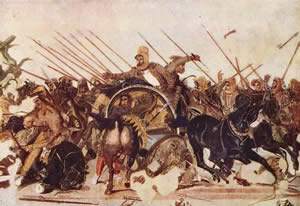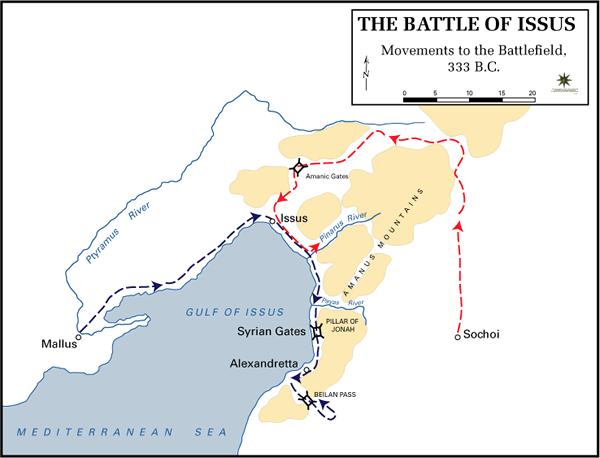 Back in the year of 333 BC a battle of large proportions occurred between two foe who would be at war for many centuries on and off, these were the Greeks and the Persians. Effectively this battle was between Alexander III of Macedonia and his Greek army and the Achaemenid Empire of Persia.
Back in the year of 333 BC a battle of large proportions occurred between two foe who would be at war for many centuries on and off, these were the Greeks and the Persians. Effectively this battle was between Alexander III of Macedonia and his Greek army and the Achaemenid Empire of Persia.
The Battle of Issus was part of a pivotal change in who was the strongest empire of the region. As the battle ensued on November 5th 333 BC the tides of change that still reverberate around the world could be felt.
The Battle of Issus occurred in southern Anatolia, part of present day Turkey. The battle was fought between Alexander the Great and Darius III of Persia. What is interesting in this battle is that Alexander the Great (Alexander of Macedonia) took overall command of his army although did allow a war council to offer guidance. Darius III on the other hand had five commanders supporting him.
Prior to the Battle of Issus
Alexander the Great set out from the Greek lands into Asia a year prior to the battle and after a large battle took control of Asia Minor. During this time Darius III built a large army in Babylon and marched on towards Alexander.
While all this was happening Alexander had sent a General of his by the name of Parmenion to hold the Pass of Jonah, Darius knew of this so decided to take a route past Parmenion and took Issus unopposed. This move meant Darius had by passed the army of Alexander and effectively cut his supply line, from here he started moving south.
What Darius did not know until he reached the River Pinarus was that Alexander had started marching north, here 7 miles from Issues on a narrow coastal plain the battle would occur.
The Battle of Issus
The battle looked to favour the Persians as they had a total of around 100,000 men, including 10,000 of the feared immortals. Alexander on the other hand had just over forty thousand, so the odds were stacked against him.

Both armies formed a line with Alexander on the right of his and Parmenion on his left in support. Darius was in the centre of his army.
The opening of battle came in the form of a Cavalry charge from the Persians; this charge mainly hit the left flank of the Parmenion led men. The flank held tight against the tide of cavalry whilst Alexander’s Hypaspists drove through the right flank of the Persian line splitting off a large group of Persian infantry from the main army. Here Alexander mounted a charge against Darius himself, but Darius fled to the rear of his forces.
Darius was allowed to get away by Alexander as the left and central lines of his army were struggling to restrain the cavalry charges of the Persians. To help Alexander and his army pushed from the right into the Greek Hoplite mercenaries fighting for the Persians central line.
The Persian army saw that their esteemed leader of Darius III had fled the field of battle and knew they had lost so tried to flee the battlefield. The cavalry of Alexander followed the fleeing Persians and slaughtered thousands as they went.
The battle finished as a resounding victory for Alexander with Alexander losing 7,000 men to the Persians under Darius III losses of 20,000. In the ensuing battle all five of Darius’ commanders perished.
The battle of Issus changed the power of the time as the Persian Empire entered a period of decline and Alexander the Great went on to enjoy many more victories in battle increasing the lands of his Empire.
